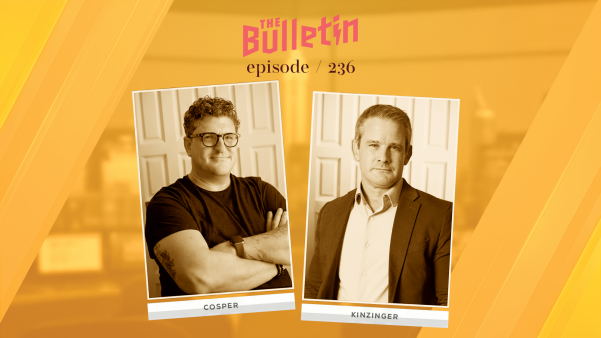Fannie Hamilton sat among teenagers during the Sunday service. She used her left hand to hold up her stroke-affected right hand in praise, belting out the words to “My Glorious” by Delirious. A few minutes later, she stood next to a 16-year-old, who joined her in belting out the words to “Great Is Thy Faithfulness.” She was a small group leader in our youth ministry—at the age of 82.
She embodied my vision for the church as real and relevant to all ages. I had envisioned a church with young and old and in-between learning from one another, deferring, serving, praying, working, worshiping together—one heart, one mind, one church (Acts 4:32).
I long for a church where teenagers don’t leave as soon as they turn 18. According to George Barna, there are 8 million teens active in student ministries now but who will no longer attend church when they’re 30—a 58 percent drop in church attendance during the 20-something years. That shouldn’t be.
In my 12 years as a youth pastor, we equipped our students for lifestyle evangelism; we created fun, authentic environments of grace; we discipled young people; and we passed the baton of leadership to the next generation. Student ministries were inspiring and captivated young people. I remember making a silent vow, “God, if I ever get to be a senior pastor, I’m going to do youth ministry for big people.”
At Fannie Hamilton’s church, that’s exactly what happened.
How to “keep it real”
My first opportunity to try this YM4BP strategy came when a church of 150 in Harrodsburg, Kentucky, called me to be their pastor. In my first year, we made many changes (“I’m just a youth pastor,” I told them, “I don’t know any better”), the most important of which was to get real.
One of the first lessons of youth ministry is to keep it real. Teenagers have their authenticity meter tuned high. If you’re not the same person on Sunday that you are the rest of the week, if your language is different, or if you act differently, they can smell it. When they turn 18, if they suspect the whole church is that way, they leave it.
This church was filled with good-hearted people, but they were trying to become what they thought church should look like. They tried to be high church instead of being themselves. I challenged the church to change.
Through modeling and from the pulpit I consistently communicated, “Let’s talk about real struggles and real questions. Let’s not be an exclusive club, but instead build a community that currently disconnected people want to be a part of.” I encouraged them to befriend non-Christians and to rub shoulders with the culture, so they could learn to talk normally and engage people outside the church in meaningful conversation.
In preaching, I would crack open the door to my personal life, not to glamorize evil, but to say, “This is my struggle, and this is how God has helped me.” Sometimes I would deliver a string of Christianese jargon to point out how exclusive and silly we sound when we talk like that.
There’s a saying in that area, “The reason central Kentucky has so many rolling hills is because people have been burying their stuff for generations.” We won’t have any impact on 20-somethings if we “hide”our stuff.
Russ didn’t hide anything. I had Russ share his story of gambling addiction before the church. They didn’t normally talk about things like that, but we started inviting people from the congregation to share their stories.
Russ pushed us to become more real when he stood up and said, “I was sitting there with a bottle of Jack Daniels in one hand and the remote in the other, watching the Super Bowl, knowing I had just lost my house because my team had lost. I put down the remote, and I picked up the phone to call rehab.” He opened a door for people to be honest.
If someone said to me, “Our kid has a drinking problem,” I sent them to Russ. Their teenager would sit down with a 50-year-old man and talk for real about drinking. Pain and sin and consequences cross all generations.
Recently I conducted Russ’s funeral. He had a massive heart attack at 53. People from our church and people who never went to church—people of all ages—came. They were there because of Russ’s influence, witnessing how the grace of God can touch anyone’s life. And it all started with one guy standing up and just being real.
God grew the church in Harrodsburg into a real, authentic church. Then he took me to a church plant in Las Vegas, then to Southland Christian in Lexington, Kentucky, and now to Willow Creek. In each place, I have carried the vision of “youth ministry for big people” and of the church unified in heart and mind across the generations. To accomplish that vision, however, we’ve had to do more than just “keep it real.” We’ve also had to engage each other’s lives.
I see young people
The typical church segregates youth ministry from “big people” church. At times, student ministries are created so we don’t have to be challenged by their new ideas. But churches that remain unchanged by new generations grow out of touch, ineffective, and inwardly focused. They also soon discover an absence of 20-somethings.
Rather than separating young people from the mainstream, we need to engage them. This means including teens and 20-somethings in visible ways: worship, drama, greeters, testimonies, and even leadership.
My son and two of his freinds were in the worship band at Southland since ninth grade. Were they killer musicians then? No. But we surrounded them with good musicians who helped them grow. But they’re really good now. I watched as these 22-year-olds led worship for a Willow Creek men’s retreat, and I thought, “These guys are lifers! They will always love the church.”
Engaging means targeting your programming and teaching like you know young people are there. That means including them in preaching illustrations or challenge points (“whether you’re at work or by your locker”). It means learning about their culture and addressing their issues.
In basketball-obsessed Kentucky, I recruited six high school point guards to come on stage. I asked them how they play their position, how they break the press, and so on. Then I said, “You know we didn’t invite you up here because you’re tremendous basketball players—though you are. We invited you because you know how to break the pressure of living for Christ in your high school. Tell us about that.” They did. Then I said, “On behalf of this whole church, I just want to thank you guys for the way you shine for Christ in your local school.” Then the whole church stood and cheered for them—not the usual cheering for basketball success, but cheering for their faithfulness to Christ.
This principle of engaging extends to every generation, and it begins with us church leaders. At Willow Creek, I enjoy hanging out with the Axis group (college and 20-somethings). I spend time worshiping with Promiseland (the children’s ministry). When I was at Southland, our staff played basketball with the Prime Timers (55 and up). They taped sticks to our arms and made us wear trifocals, but we played! At church picnics, I play all-time quarterback with the kids and make sure I throw the ball to every one of them.
I received an e-mail recently from a ninth grader: “I just wanted to tell you I really loved your message last week. I’m the kid you threw a frisbee with in the parking lot last fall.”
Simple things build bridges, and they don’t take much time.
Time for straight talk
While every generation maintains its uniqueness and offers different strengths, the heartbeat of God is for one church. So many forces drive generations apart, but moderns and postmoderns can coexist. It requires humility, mutual submission, and respect for different strengths and passions. Those virtues don’t happen easily. They emerge as we teach them and model them.
Sometimes that means straight talk. Len Sweet asked a seniors group, “How many of you grandparents love your grandkids? How many of you love your grandkids so much you would lay down your life for them?” Many hands were raised. Then he said, “How many of you love your grandkids so much you would lay down your music for them?”
Other times you can just drop in comments, like the one I made following a service that included children and teens: “I am so proud to be part of a church that sees the next generation not as the church of tomorrow, but as the church of today.”
And to the students, I would say, “You need to be grateful to be in a church where older adults love and support you like these do.” The vision must be cast and recast.
In Lexington, we had a reunion service featuring the former senior pastor and the quartet that sang with him every week during his 40-year tenure. These guys we all loved sang old gospel songs, and it was a great night.
The next morning, an older guy in the church grabbed me. “Were you here last night at that reunion?”
“It was great, wasn’t it?” I really thought it was, although our music was now led by a worship band.
He said, “I love that old quartet and that old preacher. Let me tell you something—”
I thought, Oh, man, he wants them back.
He put his hands on my shoulders and said tearfully, “When I look down that hallway and see thousands of teenagers pouring into this church, I thank God that I’m a part of this church. I’m not longing for the past; I believe that these are the good ol’ days. “
One heart, one mind, one church.
Mike Breaux is a teaching pastor at Willow Creek Community Church in South Barrington, Illinois.
Copyright © 2005 by the author or Christianity Today/Leadership Journal.Click here for reprint information onLeadership Journal.









